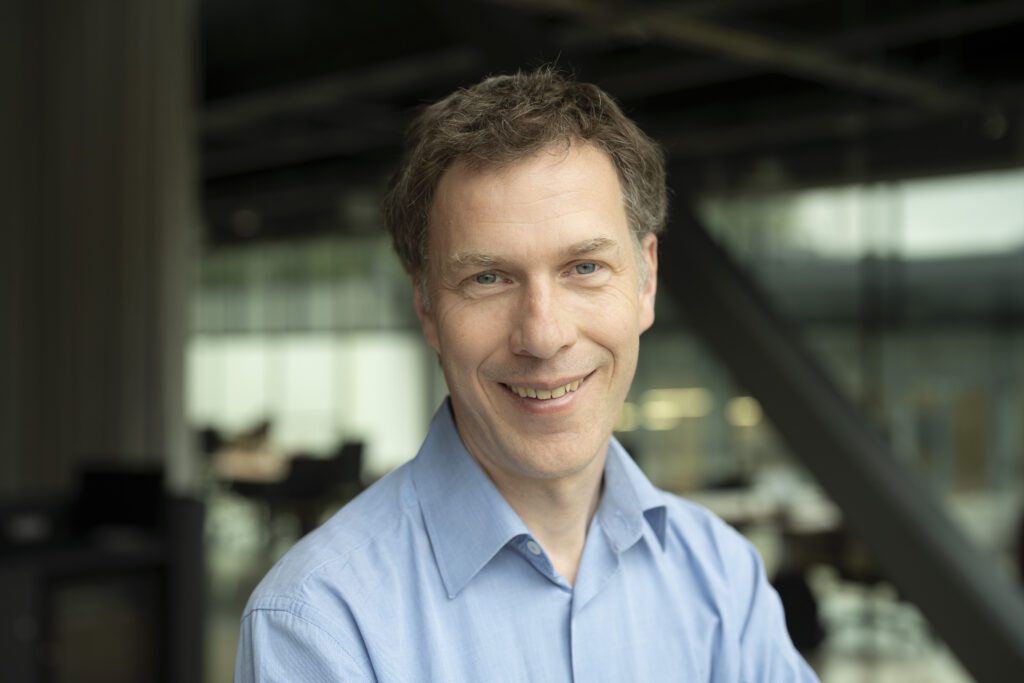Lieven Vandersypen

Prof.dr.ir. L.M.K. Vandersypen
Room F216
L.M.K.Vandersypen@[tudelft.nl]
LinkedIn
Management Assistant: Julijana Avramov & Frederieke Brands (Currently on maternity leave)
Lieven Vandersypen (Leuven, Belgium, 1972) studied Mechanical Engineering at the KU Leuven and received a MSc and PhD in Electrical Engineering from Stanford University (2001). He carried out most of his PhD research at the IBM Almaden Research Center in San Jose, CA. During these years, his scientific interests and fascination evolved from mechatronics to micro-electromechanical systems to quantum mechanics and quantum information. As a PhD student, he used the spins of atomic nuclei in a molecule as quantum bits and implemented various quantum algorithms for the first time. Most famously, he demonstrated Shor’s quantum algorithm for finding the prime factors of the number fifteen (15=3×5).
He then moved to TU Delft, the Netherlands, first as a postdoc and since 2006 as Antoni van Leeuwenhoek professor. He leads a group that pioneered quantum computing based on electron spins in semiconductor quantum dots, often dubbed “artificial molecules”. Breakthrough results were the ability to trap, initialize, manipulate and read out the spin of single and coupled electrons. “Over time, we get used to working with single electrons, but every time I pause to think what it is we’re doing, I’m really amazed”, he notes. He furthermore worked for ten years on a diverse set of experiments using graphene, a layer of graphite just one atom thick. His current interests are to devise and demonstrate novel building blocks of a large-scale quantum dot spin qubit processor and to study many-body physics problems using quantum dot arrays.
Ultimately, what drives him is to see the most fundamental and puzzling aspects of quantum mechanics applied to tasks that are otherwise impossible, creating opportunities for scientific and technological breakthroughs.
Prof. Vandersypen received Starting, Synergy and Advanced grants of the European Research Council, and Vidi and Vici grants of the Dutch Research Council. He is a fellow of the American Physical Society (APS), a member of the Royal Netherlands Academy of Arts and Sciences (KNAW) and the Royal Holland Society of Sciences and Humanities (KHMW), and was a member of the Young Academy of the KNAW. He was selected as an Outstanding Referee of the APS, received the IUPAP Young Scientist Prize for Semiconductor Physics, the Nicholas Kurti European Science Prize, and the Spinoza Prize, the highest scientific award in the Netherlands.
Publications
Publications available here.
